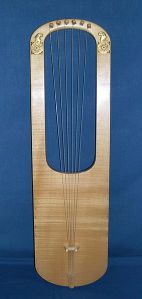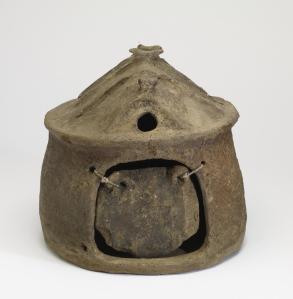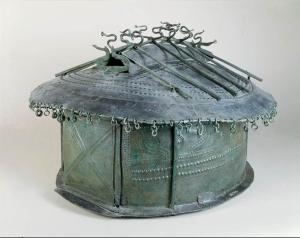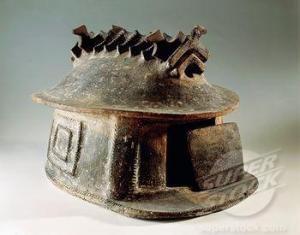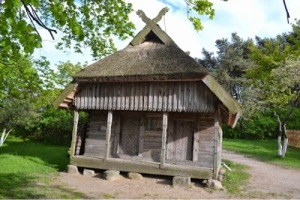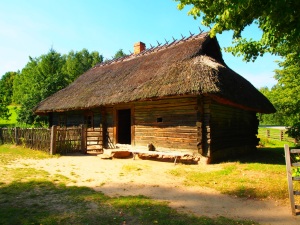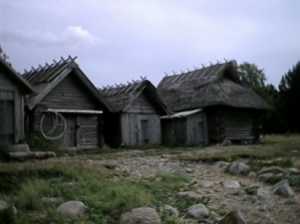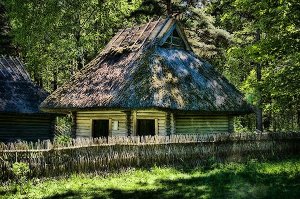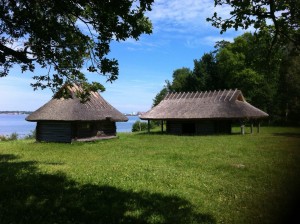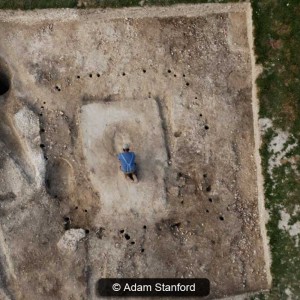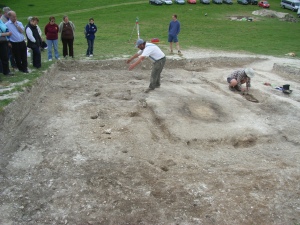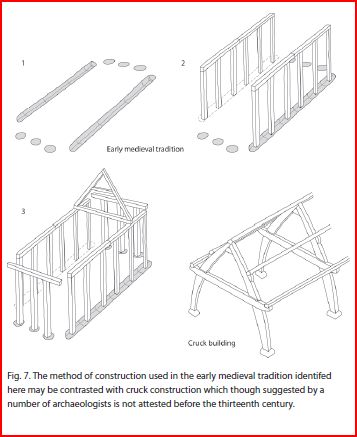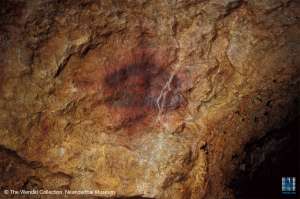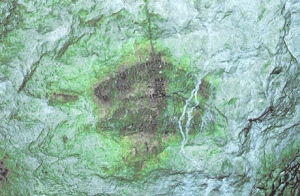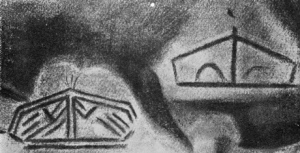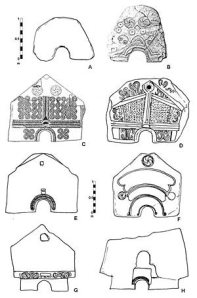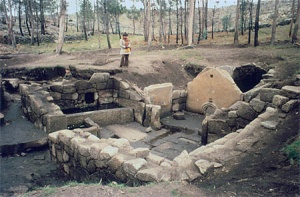The following article was originally published in a much shortened form in Pagan Dawn magazine, Samhain 2013. I thought I’d put the full version here for anyone interested. It also includes a good description of some of the design philosophy behind The Bear Feast, our Midwinter event.
Designing Ritual
Corwen Broch and Kate Fletcher
Paganism is a hard thing to define. Personally I know what I consider to be its core, but opinions vary. For this reason its often easier to delineate Pagans by what they do, rather than what they believe, Orthopraxy rather than Orthodoxy to use the technical words. One of the more important things that most Pagans do is ritual (I’m not talking about everyday ritual acts like cleaning teeth here, I’m talking about those special ritual actions we do as part of our ‘practice’). We do ritual a lot, rain or shine, on our own, with covens, groves, at camps, at open meetings, from memory or from slowly disintegrating damp bits of paper. Why? Maybe if we think a little about why we are doing it we can consider whether we are getting the most out of it? For many of you none of this will be new, but it is sometimes a good exercise to strip things back to first principles so I hope you won’t feel patronised.
The Purpose of Ritual
Here are a few reasons we could think of:
Getting in touch with something or contacting the transpersonal. Whether you define the transpersonal as Deity or as your unconscious mind, ritual can help us reach out to the ‘other’, within or without. This reaching out can achieve anything from communication to actually embodying some other transpersonal force. Examples: Drawing down the Moon, the Wiccan rite whereby the Priestess embodies the Godddess and speaks as her. Vision Quest, where the aspirant hopes to catch a glimpse of the forces that underlie reality and gain power or knowledge from this vision.
The social aspect, bonding groups and establishing boundaries. Ritual can be a solo activity but is more often done in a group. The simple act of being together in the heightened state of ritual time can strengthen groups, but ritual is also used, through the concept of Initiation, to mark the entrance of people into a group. Examples: Druid Initiation, at my initiation I became a full member of my Druid Order. Even though I had paid the money and done the course a physical initiation ceremony was a powerful marker which changed how I felt about myself and the group.
Achieving change, magick and psychology. Perhaps we want to change how we feel or think. Perhaps we want to change something in the world through non physical means (if one believes this is possible). Ritual is certainly a powerful way to change how we feel about something, or to change our view of ourselves. Example: Coming of Age ceremonies exist in many cultures to mark and smooth the change from child to adult. Many Pagans are seeking to facilitate their own children’s growth in this way.
Comfort. Lets not underestimate the simple fact that ritualistic behaviour and the sense of altered perspective it brings can be comforting and offer solace, often through contact with something beyond the self, or through simple familiarity. I think there is a degree of comfort implicit in the social bonding achieved by successful rituals too.
Delineation of time and space. Ritual may be used to mark out a time or a place as somehow special, dedicated to a certain purpose or worthy of increased respect or different behavioural norms. Example: The Consecration of an Altar in a room may add a sense of peace and sacrality to the space and enable further work such as meditation to take place there.
Art. Ritual can be a form of artistic expression in its own right. It seems that the overly theatrical rituals typical of Victorian occult groups like the Golden Dawn are close to theatre and are as much artistic experiences as magical ones.
I’m sure there are many other reasons too, and any ritual may include several of the above elements.
The Tools of Ritual
In order to achieve the above end results we can use many different techniques or tools. Of course most rituals probably include many of these and perhaps more that we haven’t thought of. Here are a few ideas though. Obviously there is a great deal of overlap through between these two broad categories, as they both ultimately work on the minds of the participants.
Physiological Tools. These work on the mind primarily through the body. They exploit our own body’s responses to fear, discomfort, sensual stimulae, sexual arousal or adrenaline and thus heighten our sense of being in that moment. By giving us a heightened experience we may be able to enter intense emotional states more easily, we will also be more likely to form lasting memories of the ritual, which is important if the goal is to achieve some long lasting psychological shift. Examples: darkness, firelight and flickering light, disorientation, unusual sounds, smells, sights, locations, posture. These may be combined; in my initiation into the Bardic Grove for instance I was blindfolded (in darkness, disoriented and somewhat anxious), robed, led by the hand (sensual stimulae), asked to curl up like a seed (posture) and exposed to incense, chanting and music (sounds, smells etc). As part of the ritual I stood up and was unblindfolded (posture again and light etc), and found myself in a wood (unusual environment), all of which served to put me in an extremely heightened sense of awareness which made the words spoken to me, and which I spoke, more powerful.
Psychological Tools Many of them rely on changing the environment we find ourselves in to one that is significantly different from our everyday experience, one that may have symbolic or meaningful content. These include special words or music, symbolic costumes or objects, drama or narrative. These things are chosen to be beautiful or elicit some other emotional or rational response. Drama and narrative and symbolism are especially important as they allow us to bring deep content into our ritual without having to explain what everything means explicitly. We all know what a person wearing black with a skull mask and carrying a scythe represents, there is no need to talk about what death means or describe it in words. In this way symbolic items or characters can stand in for large and complex concepts, and are well understood as such by both conscious and unconscious minds. The deep meaning of actions carried out by or with these symbolic objects or characters are understood very well by the unconscious mind. Social relationships and status may also play a part, initiations are often carried out by the most ‘important’ people in the group and their status adds to the effect of the actions.
Altered States. All of these factors may contribute to us entering an altered state of consciousness. I don’t want to go into this area in great depth as it could be the subject of a whole series of articles, but basically any state other than our normal waking consciousness could be considered an altered state. In some altered states, such as light trance, we are open to suggestion or more likely to experience glimpses of the transpersonal. Even the state of heightened arousal we mentioned above is an altered state of consciousness, though one that we may not notice in the moment.
Repetition. Repetition deserves a paragraph all of its own. Repetition within ritual, repeating the sacred words for example, or repeating narrative elements in the manner of a children’s story, is important because it can put us in an altered state of consciousness, or more prosaically simply drum words or images into our minds. A standard familiar opening or closing, if not too long or uninteresting, may be helpful in establishing mood. Repetition of entire rituals themselves is also extremely powerful. A major shortcoming (in my opinion) of many Pagan rituals is the feeling that we should re-invent the wheel and write a new ritual each time. This is unnecessary and may actually be seriously counterproductive. A well designed and enacted ritual gains tremendous power through expectation and repetition, we don’t need to worry about boring our participants if there are enough dramatic, sensual, psychological and physiological elements for them to experience! If you feel you have hit upon a successful form, why change it? Why not let it run and refine it instead?
Putting it all together
So we want to do a ritual. Firstly think about what we are trying to achieve. Without a clear purpose we will achieve little. I’ve been to too many seasonal rituals that are carried out just because it’s that time of year. They lack focus and are generally unsatisfying experiences. It is of course perfectly acceptable to have a ritual as pure theatre or as a get together, but if you do why not use your skills to make it artistically or socially fulfilling for all concerned?
Having delineated our purpose or purposes then it is time to think what elements from the toolbox of ritual would be appropriate. Finding a central image may be useful, or a central process. A symbolic action might be enacted, like the famous reaping of an ear of wheat in silence, or the baptismal immersion in water, and this central action can be surrounded by other elements which reinforce its symbolic meaning or psychological or physiological impact. Simplicity is often more powerful than complexity, there is only so much that the mind can grasp without becoming overloaded. It is especially important not to overload the mind with too many words! Images and actions are far more powerful, words are no substitute for them. Too many words may lead the participants to lose interest and switch off, there is no rule about how long a ritual has to be, make it short and punchy rather than long and dull!
Case Studies
Here are a couple of case studies which hopefully illustrate these elements of ritual design.
The Mercian Gathering is the single biggest outdoor Pagan gathering in the UK. Designing a meaningful ritual for a group of almost 1000, some of whom may know little about Paganism and the others will be from many different traditions must be a challenge to say the least, but I feel that the Mercian Gathering achieve their goals well. The ritual begins with symbolic cleansing by passing through a fire labyrinth to the sound of pipes and drums. This uses many of our physiological tools above, fire, darkness, sound etc. It marks the entrance into a liminal time, once we have passed through the labyrinth we are in a different (head)space. Everyone then processes to the Wicker Man where some have hung offerings and prayers in the hours preceeding . The procession, with its sights and sounds serves to add a sense of expectation. Everyone circles the Wicker Man and the fire is lit with flaming arrows- a far more marvellous spectacle than lighting it with a match would be! There is dancing and music and cheers as the Giant falls- the sacrifice is complete. Later bread will be cooked in the embers, in the morning the bread will be drawn forth, a suitable resurrection with rich symbolic meaning. There is another procession, bearing solar imagery, to the main circle where the bread is shared.
This ritual has many powerful visual images and coupled with the symbolic sacrifice and rebirth is satisfying emotionally and rationally. It could inspire a ritual on a small scale too, following a trail of lanterns through a wood to a place where among chanting celebrants a corn dolly is sacrificed, burnt, and a loaf pulled from its ashes would be equally powerful if somewhat less spectacular!
The Bear Feast takes place at Midwinter. We were inspired by two things to create this ritual. Firstly ancient bear ceremonies that were carried out all around the sub-arctic regions, and secondly by Graham Harvey’s writings on Animism, and more specifically a talk he gave at an OBOD camp many years ago about one of the origins of religion being our need to apologise to our food. The emotional or spiritual purpose of the Bear Feast is to forge a compassionate connection to the food we eat and the lives that are inevitably taken in its production, directly or indirectly. If we are respectful to those other-than-human-persons who literally died that we might live, then we should try to live our lives to the full.
Bear Feast is a weekend event and thus is in effect made up of several connected mini rituals, though the whole thing hopefully functions as a kind of unity. Firstly on the Friday evening people gather in the recreated Viking Longhouse, we hold hands and all introduce ourselves and share food, then we all learn and practice the songs we’ll use the next day. There is obviously a practical aim to this (eating and learning the songs) but more importantly this time serves to bond the group together, so people can relax and feel safe and thus more able to appreciate the other parts of the weekend. The setting, firelight etc also help to add a special mood, though we are not really deeply in ‘ritual time’ yet. We do start to observe the taboo against speaking the word ‘bear’ however, which is extremely difficult at an event called the Bear Feast! All sorts of amusing euphemisms must be concocted and forgetting the taboo will be met with mockery! Use of different language in this way also reinforces the specialness of the events taking place.
Early on Saturday morning, while it is still dark, we wake everyone who has been sleeping in the Longhouse with drumming, tea is made and folk get dressed and perform their ablutions but everyone is encouraged to speak in hushed voices to maintain if possible the liminal state between waking and sleeping. Eventually drumming becomes chanting and the (previously selected) hunters assemble by the doors with their spears. They are smudged and blessed with an ancient poetic hunter’s blessing translated from a Finno-Ugric poem and while this whole process is going on we all sing some of the songs we’ve learnt. The atmosphere really builds (as you might expect in a Viking Longhouse at dawn full of incense, firelight, chanting, drumming and beautiful poetry) and there is a great sense of expectation. Everyone leaves and we process around the site until we come to where the (person impersonating the) bear is hiding. The bear is woken from its hibernatory sleep according to an ancient formula and is then ‘killed’ by the hunters, again in the way expected by tradition. In the dim dawn light the hunt looks quite convincing and even though everyone knows this is ‘pretend’ the build up and the imagery is so powerful that you are moved in spite of yourself.
The men and women (or as we like to say ‘those who identify with stereotypical male and female roles…) separate and the men remain with the bear to remove his skin (an antique real bear skin) and then hold a symbel where we make boasts and promises. This is bonding for the men but also gives the women time to prepare the Earthouse, the large roundhouse where the later parts of the ritual will take place. The women symbolically clean the space, smudge it and sing a special song. They light the fire, all these actions are explicitly carried out to honour our ‘guest’, the bear. The men process to the door singing, and there is a ritual exchange of words through the closed door. Eventually the door is open and the men carrying the bear enter, they are sprinkled with water and welcomed with song, the bear is taken to his place of honour where his throne and its surroundings are decorated with offerings representing the food we have eaten that year.
In this part of the ritual we see the central image or narrative starting to emerge. The Bear represents our food, by killing him we acknowledge the role of death in bringing us food and by honouring him we honour the things which we have eaten.
Later in the day we have a talk and then silly games, ostensibly to choose next years hunters but also to honour our furry guest. We have a meditation which brings the last year of our lives and the coming year into focus and attempts to call up a sense of all those persons we have eaten, with the intent of honouring them. This is the most transparent part of the ritual with regards to its meaning as it is explicitly stated, but it is woven into the ritual as a whole and serves as part of the preparations for our sacred meal. This meal represents the bear’s meat but is usually of local venison (with a vegan option!). There is music and song followed by the last part of the ritual, where the bear skin is levitated with the power of our song up (at least that’s how we describe it) out of the Earthouse roof, while objects representing the prayers we send with him burn on the fire. Sometimes we have let off a firework as a sign of his ascendance. There is a strong element of play acting and some humour in all this but it in no way diminishes the seriousness or the magical or spiritual power of the experience. Mirth and reverence can happily co-exist. The bear will of course return from the Sky Father next year, as all the matter in the world moves through cycles of animate and inanimate existence, those atoms which make up our bodies being no exception.
The Sunday morning ends with an exchange of gifts and the extinguishing of the fire, each participant pours a cup of water onto the fire resulting in a great cloud of steam and smoke, a good action to mark the ending of that years Bear Feast.
This ritual then combines the strong central image of the death, consumption, ascension and assumed return of the Bear with many of the tools of ritual we spoke about earlier. Location is important but the timing of the more symbolic parts of the ritual to take place at night or early in the morning, by firelight, to the accompaniment of ‘bells and smells’, chanting and drumming, is deliberate. There are many small touches to involve each person present, from exchanging gifts to dressing the altar and playing communal games. Perhaps most crucial is the fact that we have as much as possible tried to keep the event as similar year on year as possible. We have obviously refined it, and in fact a few years ago changed the order of its parts quite radically, but now it seems optimal we will keep the words, songs etc the same. We can draw on the power of repetition which both deepens everyone’s experience and also makes things run more smoothly, eventually Bear Feast should run itself, people will know their parts and the songs and what happens next. There are already signs of this happening.
Last Words
So to summarise when planning ritual boil down your purpose into a few images or actions, and then find some way to make them have visual or psychological impact. Surround them with elements calculated to add intensity to the experience. Carry it out with pace and feeling. Job done!
What do you want to be different after the ritual?
What do you want to change?
Kate and Corwen are musicians and workshop facilitators. Corwen also makes ancient musical instruments. See their website for details: http://www.ancientmusic.co.uk
For more information about the Bear Feast go to http://www.beartribe.co.uk
For more information about the Mercian Gathering go to http://www.merciangathering.com
For more information about Graham Harvey’s writings go to http://www.grahamharvey.org
